1,094
There’s something thrilling, affirming, even epic about saving a life. Perhaps it’s that feeling of hope you get afterwards, or a sense of personal power. Maybe just knowing that you did something that
mattered to someone.
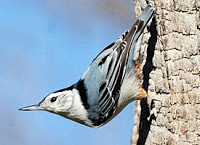 On Thursday I was working in my home, when I heard a distinctive “this-doesn’t-sound-right” squeak. A pet owner for 21 years, I knew that sound, and descending the stairs, saw my cat Tina with a nuthatch in her mouth. A quick hiss from me and she dropped it. The poor little bird: it was in shock. Mouth gaping, gasping, eyes blinking furiously, one leg twisted. I cradled it in my hands for a while to warm it, then hauled out the very handy and well used “critter keeper” plastic box, where all injured wildlife goes. I left the bird alone for two hours. When I returned, it was standing, flapping its wings, eyes bright and eager. Best of all, both legs seem to be functioning. I took it to the back door and opened the top. She flew immediately to a tree, upside down, which is what they do.
On Thursday I was working in my home, when I heard a distinctive “this-doesn’t-sound-right” squeak. A pet owner for 21 years, I knew that sound, and descending the stairs, saw my cat Tina with a nuthatch in her mouth. A quick hiss from me and she dropped it. The poor little bird: it was in shock. Mouth gaping, gasping, eyes blinking furiously, one leg twisted. I cradled it in my hands for a while to warm it, then hauled out the very handy and well used “critter keeper” plastic box, where all injured wildlife goes. I left the bird alone for two hours. When I returned, it was standing, flapping its wings, eyes bright and eager. Best of all, both legs seem to be functioning. I took it to the back door and opened the top. She flew immediately to a tree, upside down, which is what they do.
I felt so serene, at peace, so happy that I didn’t have to decide the fate of this miniscule, delicate fowl.
That night, I went to see the movie The Martian, starring Matt Damon. (My ex-brother in law was his math teacher in high school–just a little personal trivia) It’s a survival story (my favorite genre) and sci-fi (also a favorite), but more than that it was a human interest story. It’s about an astronaut who is accidentially left behind after a wild sandstorm causes the rest of the crew to abandon the mission on Mars. His team is in the process of returning to Earth when they realize he’s still alive on the hostile planet.
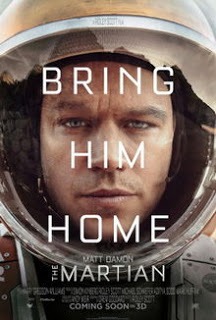 The real story is how everyone rallies to save his life, no matter the cost. At the high point of the movie, with David Bowie’s poignant and heart-warming song “Starman” playing in the background, you see everyone on earth watching the drama unfold, glued to their TVs and cell phones, while a space crew volunteers another 18 months of their lives to return to save the one they left behind on Mars. The Chinese sacrifice a proprietary and secret space project and offer it to the Americans to help rescue the astronaut. In this massive global effort, you realize NASA will be spending millions, if not billions of dollars, time and energy to save this one person. Just one man.
The real story is how everyone rallies to save his life, no matter the cost. At the high point of the movie, with David Bowie’s poignant and heart-warming song “Starman” playing in the background, you see everyone on earth watching the drama unfold, glued to their TVs and cell phones, while a space crew volunteers another 18 months of their lives to return to save the one they left behind on Mars. The Chinese sacrifice a proprietary and secret space project and offer it to the Americans to help rescue the astronaut. In this massive global effort, you realize NASA will be spending millions, if not billions of dollars, time and energy to save this one person. Just one man.
Why?
It’s worth it. You realize that you cannot put a price on one life. People will sacrifice sometimes their own lives to save others, will sacrifice money, time, personal pleasure. We somehow rise above our own needs and wants, above our differences, to something that we think is bigger than ourselves.
It’s almost a challenge to be a better person tomorrow than who we are today.
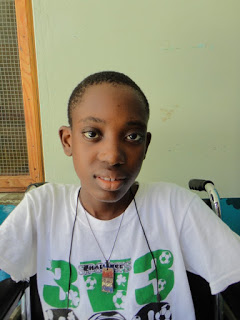 A few weeks ago I heard about Jamesley, a 16-year-old with hemophilia in Haiti. He lives in a home for children, a place where children are placed when the parents can no longer care for them. He has an open, suppurating wound, the result of an operation. He needs factor. Project SHARE has sent factor to Haiti before but the problem is, we don’t know what factor deficiency he is. And he lives in a rather remote place. Haiti has poor infrastructure and many hills.
A few weeks ago I heard about Jamesley, a 16-year-old with hemophilia in Haiti. He lives in a home for children, a place where children are placed when the parents can no longer care for them. He has an open, suppurating wound, the result of an operation. He needs factor. Project SHARE has sent factor to Haiti before but the problem is, we don’t know what factor deficiency he is. And he lives in a rather remote place. Haiti has poor infrastructure and many hills.
This was beyond my problem-solving skills so I sent a mass email out to all the people I have met since I first went to Haiti in 2002. Together, we rallied. What can we do? Bring Jamesley to Cap-Haitien in the north, where there is a doctor I know? No, there are no labs for hemophilia testing there. Should we bring him to the Dominican Republic, where he can be tested at the Robert Reid Cabral Hospital? I have many friends there. But he doesn’t have a passport, and the 8-hour bus ride would be difficult; who will accompany him, who will pay for him?
Enter Dr. David Andrews, a pathologist from University of Miami, who knows a lot about hemophilia and testing for hemophilia. Bring a sample of the blood to Miami and I’ll test it, he said.
How to get the sample to Miami?
Granted this isn’t like rescuing someone stranded on Mars, but then again, this is real life.
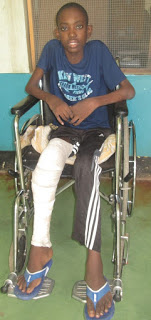 Yesterday, a medical volunteer team from the States just happened to be nearby his village. They took Jamesley’s blood sample at 10:30 am, packed it up, and by 6:30 pm landed in Miami. Dr. Andrews, on his day off presumably, drove to the hotel to pick up the sample and should have an answer by the time you read this blog posting.
Yesterday, a medical volunteer team from the States just happened to be nearby his village. They took Jamesley’s blood sample at 10:30 am, packed it up, and by 6:30 pm landed in Miami. Dr. Andrews, on his day off presumably, drove to the hotel to pick up the sample and should have an answer by the time you read this blog posting.
It seemed to difficult at first: so many options and so many obstacles. Then, it suddenly seemed so easy, when everyone worked together… all for the sake of one orphan. So worth it.
When I know what his factor deficiency is, then I can send the factor to the orphanage, under the supervision of the attending physician, and Jamesley can heal.
There are wars raging, natural disasters, a massive refugee crisis…. often the news is overwhelming. I think for me this is why focusing on one life is so fulfilling: we helped one. We saved one. We did something. Instead of feeling powerless, we felt useful, needed, fulfilled.
I went to bed last night happy as a lark… or a nuthatch.
Great Book I Just Read
To Reach the Clouds: My High Wire Walk Between the Twin Towers [Kindle]
Philippe Petit
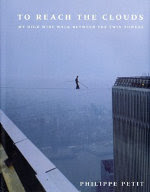 The book on which the excellent movie “The Walk” is based, Petit provides a breathless narrative, as if it is happening right now, about the inspiration, the intricate and complex planning and the execution of the most daring high wire act in history. The planning–with myriad things that could go wrong and did go wrong–which took months, tremendous dedication and stealth, is so in-depth and exhausting, it makes the high wire walk look like– well, a walk! A must read for those who want to see how a vision can motivate others (who have nothing to gain) to action, how strategy can lead to perfect execution of plans. The writing is entertaining, witty and past faced. Petit is a creative genius in many ways, Five/five stars.
The book on which the excellent movie “The Walk” is based, Petit provides a breathless narrative, as if it is happening right now, about the inspiration, the intricate and complex planning and the execution of the most daring high wire act in history. The planning–with myriad things that could go wrong and did go wrong–which took months, tremendous dedication and stealth, is so in-depth and exhausting, it makes the high wire walk look like– well, a walk! A must read for those who want to see how a vision can motivate others (who have nothing to gain) to action, how strategy can lead to perfect execution of plans. The writing is entertaining, witty and past faced. Petit is a creative genius in many ways, Five/five stars.

